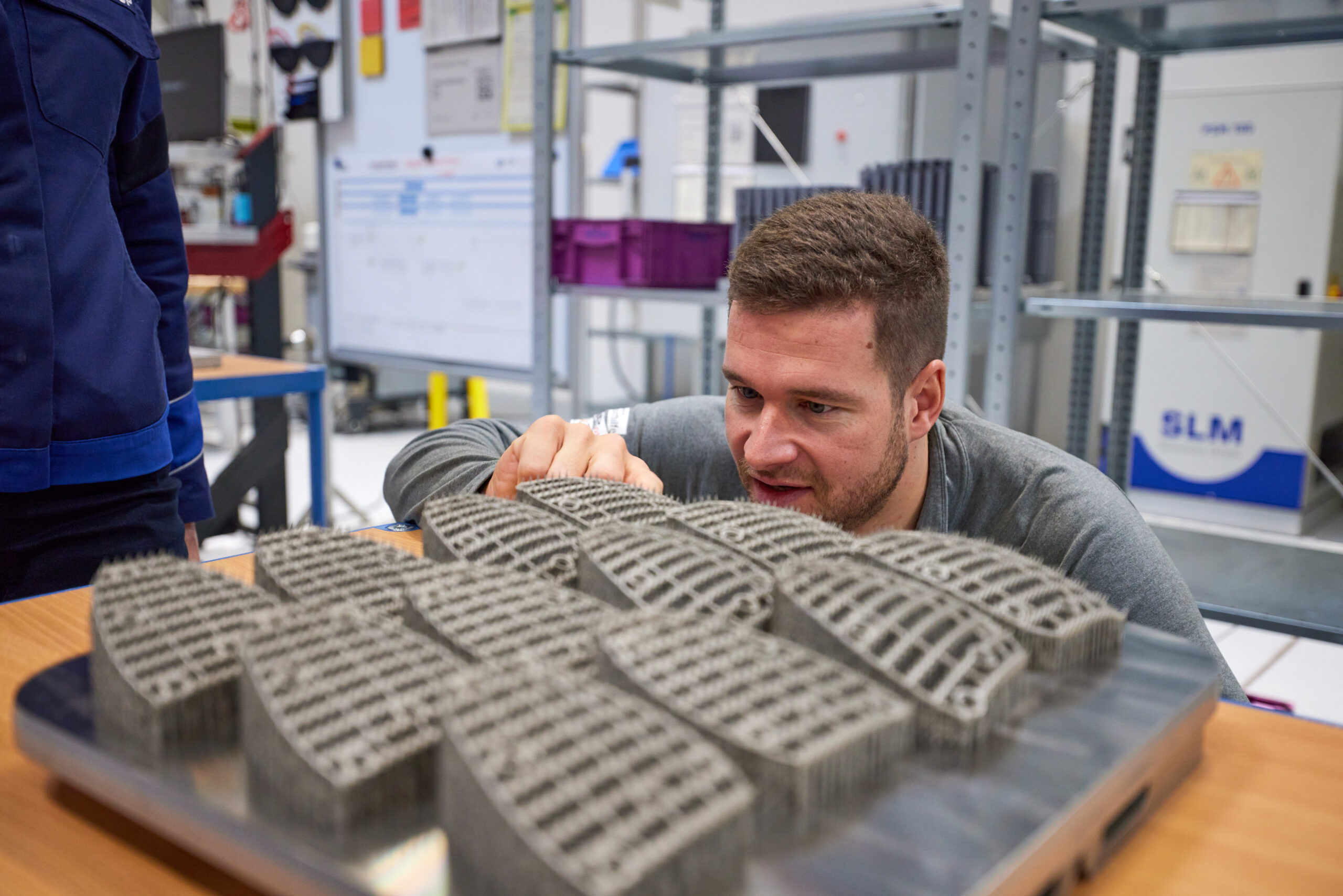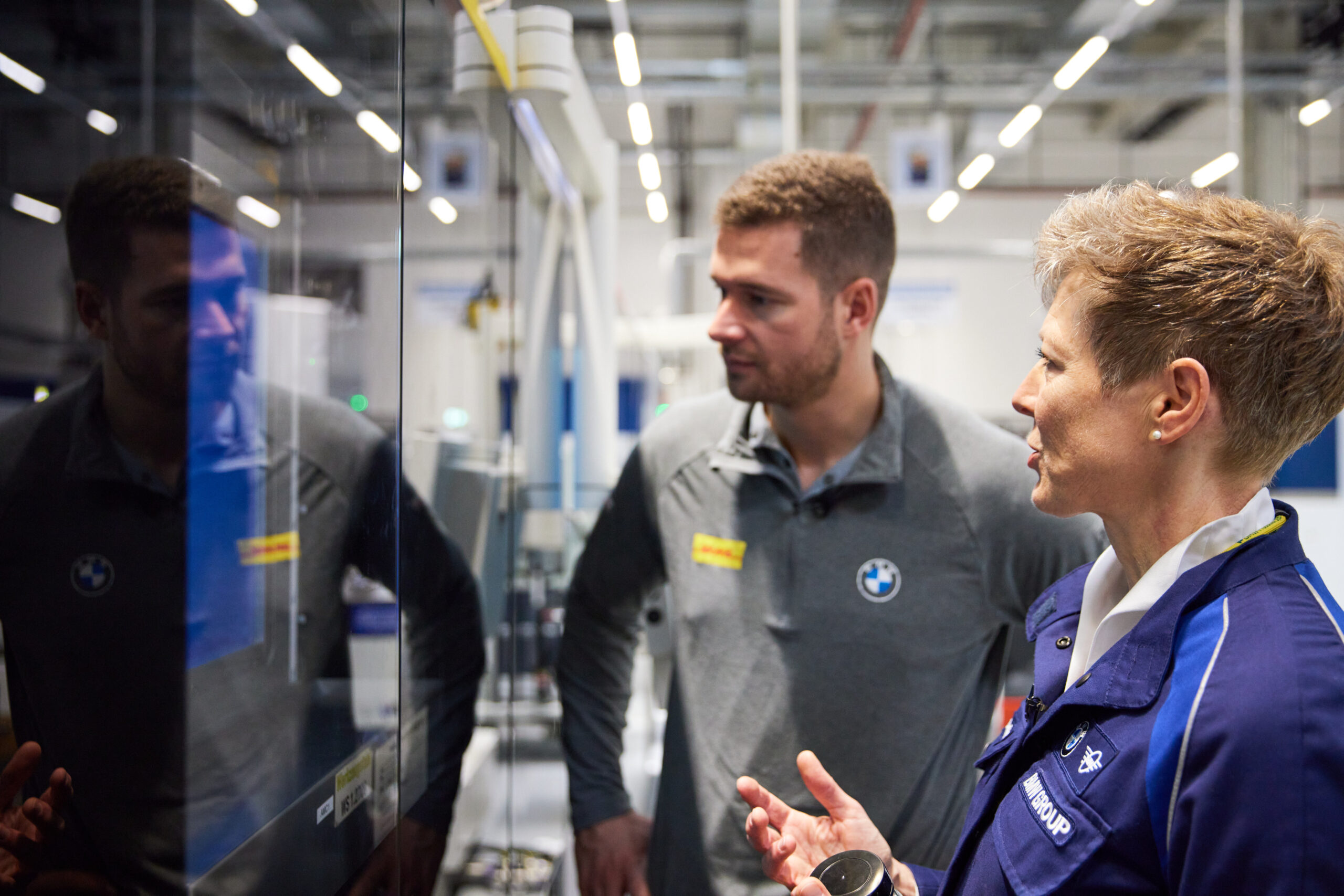Global auto giant BMW Group has developed custom spike plates for the German Bobsleigh team, manufacturing the metal athletic gear using powder bed fusion (PBF) 3D printing. Bobsledders wear cleats for traction on the ice when pushing the sled to start a race, but the shoes used in bobsledding typically rely on spikes that are permanently attached to the soles.
The spike plates that BMW Group developed, on the other hand, enable athletes to attach the spikes to a wide variety of footwear. In addition to extending the lifecycle of the cleats beyond the lifecycle of the metal spikes, this allows for the customization of nail placement configurations, which means that the equipment can be tailored specifically to each athlete for optimized performance. The idea for the spike plates is adopted from the same concept at play in the footwear used for track and field.
In a press release about BMW Group’s 3D printing of customized spike plates for German Bobsleigh, Claudia Rackl, of BMW Group Additive Manufacturing Projects & Qualification, said, “We have been using 3D printing to make components for prototypes, customized one-offs, as well as for series production for more than 30 years. The major advantages of 3D printing are the time and cost savings as well as a high degree of flexibility. This allows for us to quickly manufacture, test and efficiently optimize different variants.”
The head coach of German Bobsleigh, René Spies, said, “We tested the spike plates in the World Cup and received a lot of positive feedback from the athletes. Nevertheless, a few tweaks are still necessary here and there, but we expect to have the perfect shoes to compete in by the 2026 Olympic Winter Games at the latest.”
More so even than many of its peers in the automotive sector, BMW has been at the forefront of deploying AM in its operations for decades, and implemented two fully automated production lines centered around AM in May 2022. The company followed up on that in May 2023 by announcing that it was 3D printing sand cores to cast cylinders for the B48 engine.
Recently, I wrote about how VICIS had applied principles from part design for the automotive sector — specifically, crumple zones — to the helmets it manufactures that incorporate padding 3D printed on the Carbon platform. BMW, too, has applied the principles it has learned from 3D printing for automotive to the sporting goods market, specifically iterative design for performance optimization.
The potential for leveraging design principles established in one market in a completely different market is one of the most intriguing elements to keep an eye on as the next phase of the AM industry emerges. Accentuating the particular strengths of every individual production technique in order to maximize the versatility across a whole enterprise is precisely why manufacturing giants like BMW are looking to advanced manufacturing, as the need to become leaner intensifies in an era where growth is an increasingly scarce commodity. The more that the economy as a whole moves in that direction, the more potential there will be for organizations like BMW to branch out further and further into new areas.
Images courtesy of BMW Group
Subscribe to Our Email Newsletter
Stay up-to-date on all the latest news from the 3D printing industry and receive information and offers from third party vendors.
You May Also Like
Further Understanding of 3D Printing Design at ADDITIV Design World
ADDITIV is back once again! This time, the virtual platform for additive manufacturing will be holding the first-ever edition of ADDITIV Design World on May 23rd from 9:00 AM –...
3D Printer Maker EVO-tech Reborn as NEVO3D — Once More With Feeling
EVO-tech was a 3D printing service and original equipment manufacturer established in 2013 and based in Schörfling am Attersee, Austria. The company produced high-quality material extrusion systems featuring linear bearings,...
3D Systems Brings 3D Printed PEEK Cranial Implant to the U.S. with FDA Clearance
For more than 10 years, 3D Systems (NYSE:DDD) has worked hand-in-hand with surgeons to plan over 150,000 patient-specific cases, and develop more than two million instruments and implants from its...
CDFAM Returns to Berlin for Second Annual Symposium
The second CDFAM Computational Design Symposium is scheduled for May 7-8, 2024, in Berlin, and will convene leading experts in computational design across all scales. Building upon the first event...

































